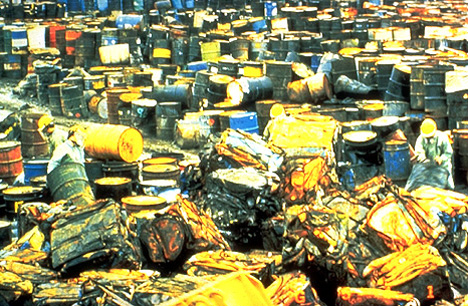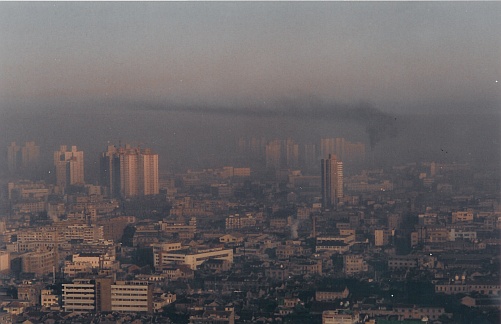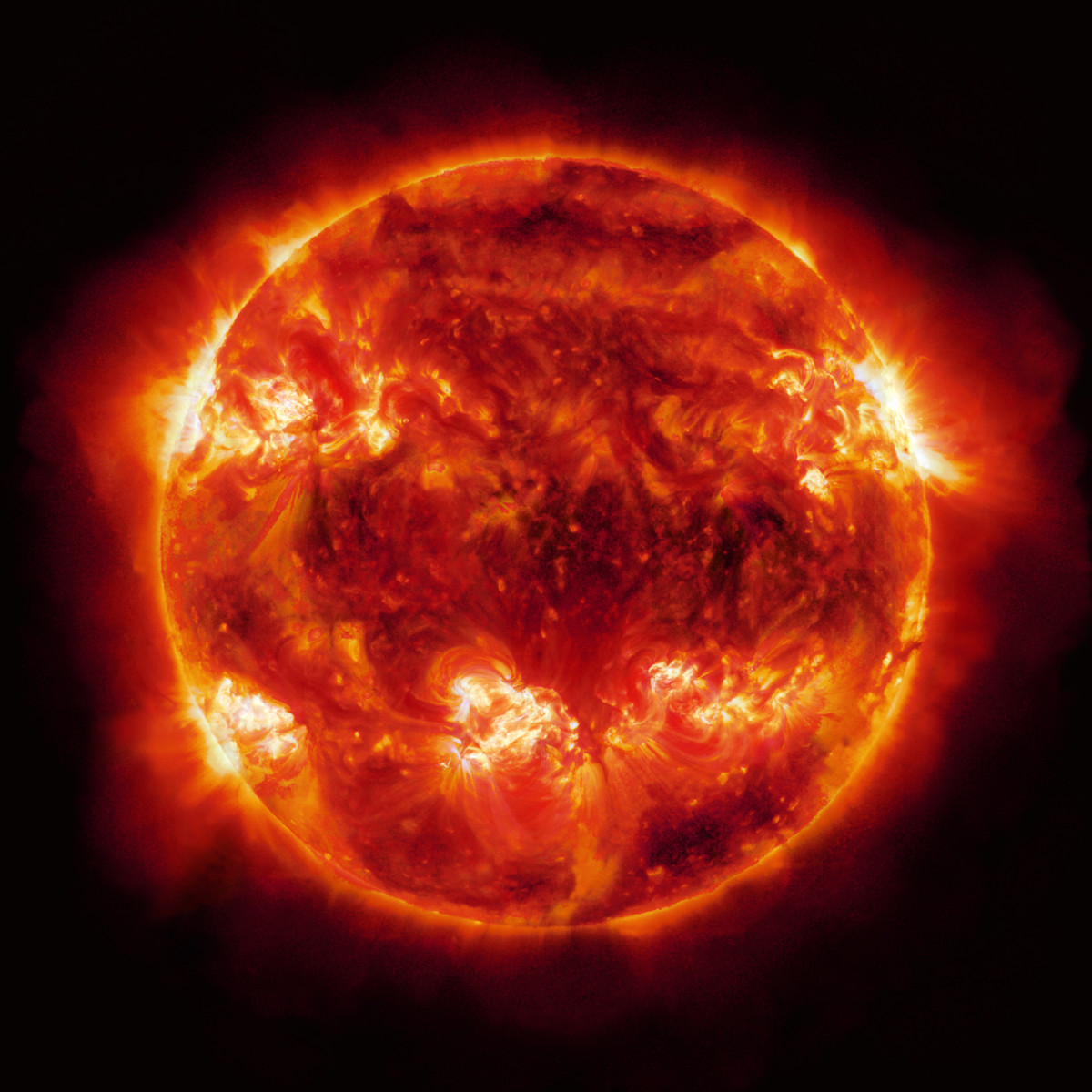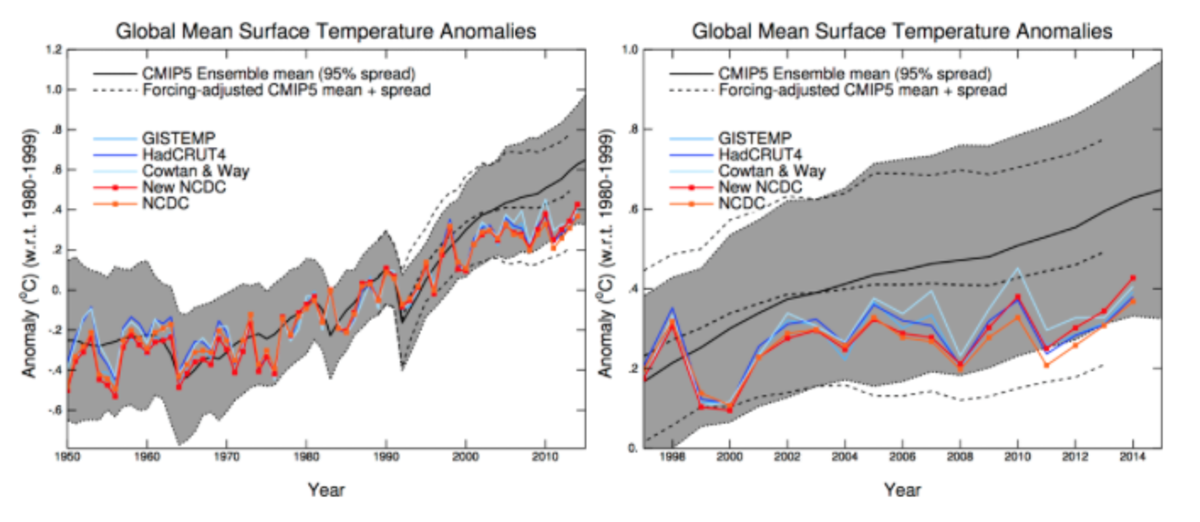Global Warming and Toxic Waste: Issues and History of Go Green
Can We Trust the Go Green Movement?
Everyone is talking about going green. But will buying in the green economy really address the problems of global climate change and environmental poisoning that have been getting worse for the last 150 years? We need to know history, or we are doomed to repeat the same mistakes. The lessons of that history are right here.
800 Years of Environmental Problems
Deforestation and Environmental Destruction
The first recorded evidence of people becoming aware of the environmental problem comes from China around the year 1200. Chinese philosophers realized that Chinese civilization was deforesting all the old-growth forests of China outside the ancient burial grounds, and that certain woods used for various purposes wood soon no longer be available.
Mass Extinctions
Human beings have been changing their environment on a continental scale for far longer than that. Early hunters found that giant mammals such as the mammoth meant a lot of food from one kill, and hunting by humans led to the extinction of many giant species. And, similar to China, Native American settlement of North America, which began about 25,000 years ago, had completely changed the North American forests from wild growth into a kind of parkland before the arrival of Europeans. Even with good stewardship, human presence changes ecosystems, reducing some species and raising up others.
Plagues and Total Habitat Destruction
The development of modern transportation created problems for human society and the environment as well. Plagues plagued humanity: Medieval Europe and Asia were repeatedly decimated, or worse, by bubonic plague, typhoid, and others. Smallpox killed tens, perhaps hundreds, of millions in the Americas, and syphilis, brought back from the Americas, was the scourge of Europe for 400 years. Ecosystems, also, were destroyed by introduction of foreign species. This has been a major part of the history of Australia, and warnings about the dangers of complete denuding of the land by invading species go back to Thor Heyerdahl's writings in the 1920s. Now, this is a major problem in the deforestation of rainforests in Brazil and elsewhere, on a scale that effects global climate and ecology.

Toxins Everywhere: In People and in the Environment
The biggest challenges arise from the Second Industrial Revolution, circa 1860, and still going on today. Creating machinery that regulates power flow allowed for the development of mass transportation, refrigeration and storage of food; and heating and air conditioning. These called for massive amounts of fuel. We began to release, in decades, carbon dioxide that had been stored away over millions of years. And we began to develop chemicals that were never seen before, leading to unimagined poisonings, cancers, and environmental destruction. Rachel Carson depicted the disastrous consequences of modern chemicals released into the environment in Silent Spring in the 1950s. Some poisoning is now ubiquitous worldwide: All farmed fish and freshwater fish can be poisoned by toxic runoff. All large wild ocean fish outside the frigid polar waters have dangerously high quantities of mercury. We are literally creating a world with very little safe food to eat. We began to address one side of this problem, toxic waste, at a national level in the US with the Superfund in 1980, but US efforts have petered out since then. Many problems remain unresolved in the US and elsewhere. Environmental destruction continues through toxic pollution. The problems are present in the developed countries and perhaps even a larger concern in developing nations such as China.
Air Pollution
We became aware of the dangers of air pollution into the atmosphere at a local level with the toxic fogs in London in the years of coal fires and the coal-burning underground. Smog became a major issue in cities like New York and Los Angeles by the 1960s. At the same time, we became aware of the first global consequences of toxic chemicals in the atmosphere: the hole in the ozone layer created by the release of freon and related chemicals. Good science and global cooperation led to a change in the chemicals we use for refrigeration, and the destruction of the ozone layer was brought under control. Saving the ozone layer is a good model for future actions. But the newer problems require bigger changes in technology and greater sacrifices in money, convenience and comfort.
Global Warming and Climate Change
Before 1980, we had substantial evidence that excess carbon dioxide we'd been releasing into the atmosphere was going to cause a change in global climate. Early predictions showed that the world would grow warmer, ice caps would melt, and sea levels would rise. More recent evidence and science show that, as there is more heat energy worldwide, the weather grows more chaotic and extreme. Highs are higher, lows are lower, droughts, rains, and winter storms are all more severe. This makes the problem much worse, both in terms of loss of life, and in terms of agriculture coming to be at risk. The evidence is that, overall, the total increase in heat is happening as fast as expected; The chaos in the climate is worse than expected; and the ice cap covering the North Pole is disappearing faster than expected. When the ice cap vanishes, the whole picture of climate for the temperate zones of the Northern Hemisphere - that's all of Europe, almost all of the US, Siberia, China, Japan, and more - becomes wildly uncertain. In the coming decades, hundreds of thousands, and then millions, of people will lose their lives to extreme weather, flooding, and starvation. One estimate says that the total death toll will top 100 million people by 2030.
Overpopulation
And global warming is not the most severe problem. There is one more: overpopulation. As population grows, metropolises become megalopolises, and environmental destruction spreads as more space is needed for living and more natural resources - particularly forests and mining products - are drained to support the human population. Local and regional ecosystems are eradicated as a side effect of the growth of humanity until the human population itself, becomes a time bomb.
Environmental Problems Multiply
Environmental problems interact and multiply. Overpopulation means more people living in flood zones. Deforestation increases flooding. Epidemic diseases are more likely to break out after sanitation breaks down from flooding or a hurricane. So we are seeing an effect called negative synergy, where problems multiply. This shows up first in the cost of problems. The costs of damage from severe stores is increasing exponentially. Part of this is due to the chaos of climate change: more severe storms coming more frequently. More of it is due to overpopulation into flood zones combined with poor zoning, planning, and regulatory compliance. As a result, we are seeing the cost of storm damage go up rapidly. The interaction of multiple causes creates an increase that is closer to multiplying than additive.

Why Are Environmental Problems Getting Worse?
Five key principles underlie all these environmental problems:
Society is Not Consciously Self-Governing: Selfish Interests Prevail
Taoist philosophy points out that "the more legal affairs are given prominence, the more numerous bandits and thieves." Any effort to regulate behavior leads to people seeking to break those rules and regulations for survival or for their own benefit. U.S. history shows that prohibition of alcohol doesn't work, that drug law enforcement increases the power of drug lords, and that cancer cannot be eliminated by making war against it. Society is simply too fragmented. The same is true with environmental problems. Small regulatory solutions can work in the short run, but larger ones will tend to make things worse over the long haul.
We Can't Easily Take the Long View: Society Operates With Little Historical Awareness
We have an ideal inspired by Native American tradition to make decisions by considering the consequences for seven generations. However, very few people study that history, and no one remembers it. We are even less are able to imagine life seven generations from now. Problems that take decades to develop are not easily addressed by governments elected every four years or so.
For example, 210 years ago, in 1802 (that's 7 generations), slavery was essential to the US economy. But how many people really know what that was like, or consider it when making choices now that will lead to lives we cannot imagine in seven more generations, in 2220?
Our society operates with short-term interests and fads. Unfortunately, short fads do not solve problems that grow over decades and centuries.
As a society, we live in the environment like the proverbial frog in the slowly heating pot of water. Slowly adapting to the heat, the frog never leaps out before he is boiled to death. There is evidence that real frogs are not that stupid - when it gets too hot, they jump. People, on the other hand, perpetually acclimate to more and more toxic, chaotic, restrictive, and destructive environments.
The Law of Unintended Consequences
In any complex system, each action we take has many effects, some of them unpredictable. We may or may not achieve our goal (the intended consequence), but we will certainly create many unintended consequences. For example, we have a refrigerator to keep food cold. But it also warms our house. Before the ban on freon, it contributed to creating a hole in the ozone layer. It made a previously unknown disease - ulcerative colitis - very common by creating a new environment for dangerous bacteria. We can't fully understand complex systems, so our actions will always have unintended side-effects.
By the way, this is why it is far easier to fly a man to the moon than it is to solve environmental problems. Outer space is a relatively simple environment compared to the wondrous ecosphere of planet Earth.
Local Increase of Order Creates Regional Increase of Disorder
This is a result of the principle in physics that entropy (disorder) always increases combined with the fundamental principle of life, negentropy, where life itself becomes more organized over time and creates more order around it. As we stabilize the level of heat in our homes through heating and air conditioning, we destabilize the temperature around us. As we create buildings and streets for our ease of life, work, and transportation, we create chaotic flow patterns for water and wind, making storm damage worse.
Increased Energy is Increased Chaos
Any dynamic system that holds energy will become chaotic in unpredictable ways as the energy in the system increases. A motor running smoothly at 1,000 rpm might seize up or blow apart at 2,000 rpm. A pot on low simmer creates a fairly predictable, steady pattern of bubbles. Add more heat, and you have a rolling boil - a powerful, chaotic, unpredictable flow of heat and water. So, as we burn fossil fuels or release the energy of nuclear power, we add heat to our ecosystem, and it becomes increasingly chaotic and unpredictable. And an unpredictable climate is the worst thing for crops and for human safety.
There is Good News
At the end of Michael Crichton's novel Andromeda Strain, the resolution is, "We are beginning to understand." And that is the good news: After 150 years of our best efforts at understanding and solving environmental issues, we are beginning to understand.
To learn more about the 150 years of work on environmental issues, please read Conservation, Preservation, Ecology & Go Green: History & Lessons.
To see how we can use the principles we've found here to evaluate the Go Green movement in general, and also specific green activities, you can read Go Green: Is it for real, or is it a scam?
Please keep learning and turn your learning into effective action. Our wonderful world needs you: She needs all of us.
The good news is, quite simply, that understanding these problems points towards the solutions. And we have over 100 years of solutions.








